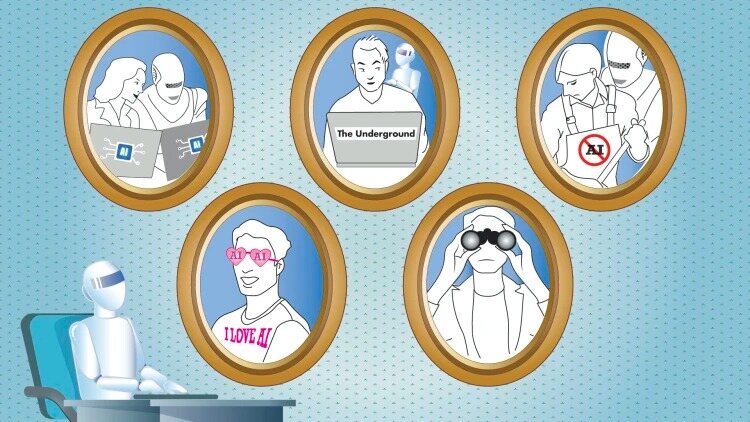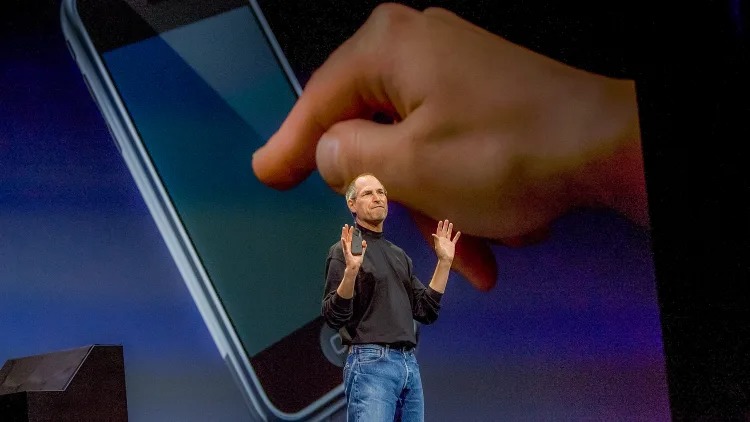- | 9:00 am
How the pay gap between employees and CEOs impacts workers, according to experts
Labor experts, employees and concerned leaders share their thoughts on the impact the CEO-to-worker pay gap.

Money can, in fact, buy happiness: A much publicized 2010 study found that employees needed to earn $75,000 per year to feel fulfilled, and that each additional dollar above that wouldn’t make a difference. But according to more recent research from Matthew Killingsworth, a senior fellow at the University of Pennsylvania, there is no such level.
After assessing 1.7 million data points about workers’ overall life satisfaction from more than 33,000 employed adults, Killingsworth “found that all forms of well-being continued to rise with income. I don’t see any sort of kink in the curve, an inflection point where money stops mattering. Instead, it keeps increasing.” Unfortunately, wages haven’t been increasing as significantly as workers might hope. In July 2013, American workers earned $20.14 per hour, on average. In July 2023, workers earned just $28.96 per hour, on average.
One group that has seen their pay increase significantly is the C-suite, CEOs in particular: The CEO-to-worker pay gap has increased steadily over the past decade. Recent estimates suggest that, CEOs at one of the top 350 U.S. firms earn $27.8 million per year, on average—399 times what the typical worker earns and 1,460% more than executives earned in 1978 (adjusted for inflation). And research suggests this growing dynamic of huge pay disparities between employees and executives produces psychological side effects.
How did executive pay get so out of control to begin with? Brandon Rees, deputy director of corporations and capital markets for the American Federation of Labor and Congress of Industrial Organizations (AFL-CIO), says one reason CEO compensation has risen so dramatically over the past several decades is because hiring teams typically do a peer-assessment analysis of how much their aspirational competitors pay their CEOs—leading to a never-ending game of one-upsmanship.
HOW EMPLOYEES PERCEIVE THE CEO PAY GAP
Many employees aren’t aware of the how large the pay gap between themselves and their company’s executives is, says Trevor Watkins, a professor at the University of Oklahoma who studies organizational behavior and employee wellbeing.
One reason for this is because many executives try to conceal or downplay how much they are paid. Another reason: While a base salary is usually the largest component of a worker’s pay package, it often makes up a relatively modest percentage of a CEO’s total compensation package. In fact, Lawrence Mishel, a fellow at the Economic Policy Institute, estimates that stock-related compensation comprises around 85% of CEO compensation. Many employees likely do not fully realize how significant cash bonuses, stock awards, and incentives contribute to the pay inequity at their organization.
Receiving stock-related compensation can also be a valuable tax avoidance strategy. For instance, researchers have found that executives with shares of stock routinely leverage inside information, sell their stocks, and use the profits to offset between 12.2% and 19.6% of their income taxes, on average.
But Watkins’ research indicates that regardless of their exact awareness, most workers perceive the gap between workers and CEO earnings to be unfair, which causes “emotional damage” to employees.
THE BUSINESS IMPACT OF THE CEO-TO-WORKER PAY GAP
“Perceptions of injustice” Watkins explains, fuel what he calls “counterproductive work behaviors” including slacking off, employee theft, and plans to quit.
It doesn’t matter if “you’re a senior executive in the C-suite or you’re the median employee on the shop floor, how much your CEO is paid relative to you matters,” Rees says. “A high pay disparity has been documented to undermine employee morale and productivity.”
Beyond the negative impact on employee morale—and the downstream consequences for productivity, retention, and ultimately a company’s culture—Rees suggests that the pay gap can hurt the economy and society in profound ways. “Excessive executive payments were a leading contributor to the 2008 financial crisis, both by giving executives distorted incentives that were not in the long-term interest of companies or in our economies as a whole,” he says.
Stock options which recur annually incentivize CEOs to take big risks each year, says Rees. “Stock options are inherently more valuable if you have greater volatility. . . . [It] encourages excessive risk taking that is really not in the [best] interest even of shareholders in the company, much less employees and customers and other stakeholders,” he argues.
“For example, if I decide I need to boost my quarterly earnings in order to boost the stock price, I may lay off a bunch of my workers to reduce costs,” he explains. “That short-term cost saving produces a pop in the stock price, but may come at the cost of the long-term, sustainable prosperity of the company.”
This volatility in the labor market driven by the CEO-to-worker pay gap is one potential reason approximately 75% of American adults are anxious about the economy and a similar share experience anxiety before going into work each week.
WHAT WORKERS SAY ABOUT FAIR PAY
Both Watkins and Rees note that the pay gap is especially egregious when comparing front-line workers and CEOs.
Alyssa Vitela worked at Target in Tempe, Arizona from June 2020 until March 2023. She made $15 per hour (just above the $13.85 minimum wage in her state) and worked approximately 35 hours per week. Vitela says the job could be physically and mentally exhausting. She often spent hours lifting heavy boxes and dealing with confrontational customers.
When told that Brian Cornell, CEO of Target, earns more than $17.6 million per year in base salary, stock awards, and bonuses, Vitela says: “It makes me feel upset because the lowest position at any company always gets paid the least, but they make you do the most work.”
According to MyLogIQ data from 2022, the median Target employee earns $25,993 and the company has a CEO-to-worker pay ratio of 680 to one.
Today, Vitela works for the City of Tempe and earns roughly the same amount as when she worked for Target. However, Vitela says she would not return to Target even if they doubled her hourly pay. “I left Target because I was being overworked and not appreciated,” she says. “And now I work somewhere that’s a way better working environment. It’s just much better mentally and physically.”
Nearby in Tempe, Kaila Yonan worked for Starbucks from January 2022 until August 2023. She says that while the benefits were competitive (especially a benefit which allowed her to attend ASU online) the job was “incredibly stressful.”
Yonan earned $15 per hour plus tips and regularly woke up at 4 am to open the store. One of the locations she worked at was a drive-through-only location where approximately eight workers in a “500 square foot space” were expected to turn out drinks in 45 seconds. She says a majority of her coworkers worked more than one job to make ends meet.
Starbucks CEO Laxman Narasimhan has a base salary of $1.3 million per year, an annual cash incentive opportunity of up to $5.2 million, and annual equity awards with a target value of $13.6 million. When he took over Starbucks in March, Narasimhan also received a $1.6 million cash signing bonus as well as a replacement equity grant with a target value of $9.25 million. In contrast, MyLogIQ data suggests that the median Starbucks employee earns $12,254 per year.
Narasimhan’s compensation reflects a common critique of the executive pay gap: CEOs reap enormous windfalls their first day on the job. While decision-makers claim that awarding equity incentivizes success, many leaders get so rich immediately that their performance almost doesn’t matter. Indeed, both corporate-governance firm MSCI and The Wall Street Journal have found that there is no connection between executive compensation and performance.
When told how much Narasimhan makes, Yonan says the news is discouraging. “No matter what you do, how much you work, how hard you work to be the most efficient, or to keep everybody happy, or to live up to your manager’s standards, you’re just replaceable to them,” she says.
Yonan says she now makes between $30 and $40 an hour serving customers at Hooters.
WHAT LEADERS CAN DO
There are a growing group of leaders who are increasingly concerned about the CEO-to-worker pay gap. Consider Wil Reynolds, the CEO of Seer Interactive, a digital marketing agency based in Philadelphia. Reynolds says he cut his salary by 25% around the beginning of the pandemic, in part to offset pay increases for his employees.
“I evaluated my own personal financial position [and] I was able to determine that I had enough,” he says, noting that while he has not personally found that the CEO-to-worker pay gaps hurts morale, or that decreasing the gap improves productivity, cutting his salary was the right thing to do.
“As an executive, you’ve got to look at your own life, and choose that you’re good where you are and then decide that these dollars should go back to the people that put you in that position without any strings attached,” says Reynolds.
Similarly, Summer Delaney, the CEO of CollabWORK, a New York City-based community-hiring platform, says that earlier in her career she often felt disgruntled by the CEO-to-worker pay gap in the media and tech industry. “I was overworked, underpaid, and frustrated with how I saw either direct managers or even executives act in environments where I felt that despite what I was doing for the company’s bottom line, I wasn’t benefiting from those benefits,” says Delaney, though she adds that some of her previous employers were also strong mentors.
Now, as a leader of her own organization, Delaney says she never wants her team to feel the way she did, and hopes to build a culture where all workers are appreciated. One technique she hopes will ease this issue is pay transparency for job postings on CollabWORK’s platform, and for all future positions at CollabWORK. She says the company’s small founding team of three is aware of each other’s compensation.
‘The best lesson I’ve learned being a CEO is no one wants to work for a leader with an ego,” says Delaney. “And in order to build a successful company and increase retention, which is the most critical element of building good teams, you really need to have buy in from those teams.”
The University of Oklahoma’s Watkins says this approach has been found to improve employee morale—even at companies where there is a significant CEO-to-worker pay gap. “Even if there is a huge pay gap, if the employees feel their are treated fairly then the gap isn’t going to cause nearly as much damage, he says pointing to research which suggests that “your relationship with your boss is more indicative of your well being than your relationship with your primary care physician.”
“Feeling like your boss treats you fairly is really important,” he adds.
“How we pay the CEO affects the rest of the workers,” agrees the AFL-CIO’s Rees. “And it’s just a reality of the human condition—we can either view ourselves as being all in it together or we can view the fact that only the very top are receiving the lion’s share.”







































